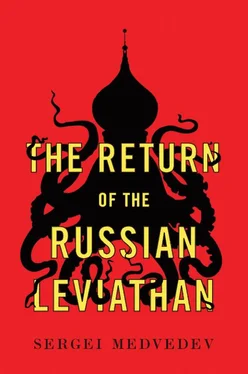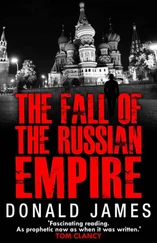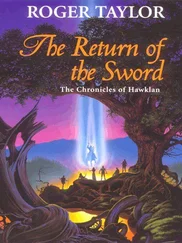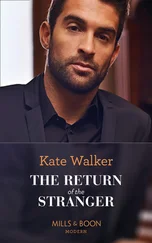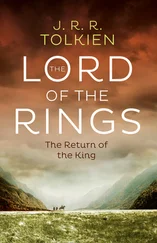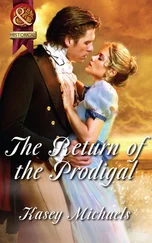Today – when horoscopes are published in newspapers alongside the currency exchange rates; when icons are stuck on the dashboard of every other car (and, at the same time, the driver doesn’t wear his seat belt); and when religious obscurantism dictates laws and court procedures – conspiracy theories are once again troubling Russians’ minds. But what is most frightening of all is that this is becoming state policy.
It all began in 2004, with the terrorist attack in Beslan in Ingushetia, when Chechen fighters seized a school and took the children hostage. Vladimir Putin suddenly announced that this was the machinations of the West, which was trying to snatch Russia’s ‘juicy morsels’. Then there were the protests on Kiev’s Maidan Square, and the carnival of ‘colour revolutions’, from Bishkek in Kyrgyzstan to Tbilisi in Georgia. This frightened the Kremlin, which saw the spectre of a global conspiracy by the agents of democratization. Next came Tahrir Square in Cairo and the ‘Arab Spring’… Then suddenly there were the protests on Bolotnaya Square in Moscow in the winter of 2011–12, and the paranoia became complete once and for all, producing a locked and hermetically sealed picture of the world. Fantastic scenarios are born in this picture, such as that the West was transferring billions of dollars to Russian NGOs in an attempt to bring about regime change in Russia. This is like Stalin’s picture of the world in 1937, when all the facts incontrovertibly pointed to each other and all together added up to a counterrevolutionary conspiracy; but not a single one of them bore any relation to reality. Nevertheless, this short circuit in the brain, this paranoia of the state, sets the political agenda and reflects the moral atmosphere of a closed and cynical society, where the individual is not free to make his own decisions: ‘the boss’ is behind everything, and everything is done simply for money.
The conspiracy theory is poor and flawed; it does not understand all the complexity, multitude and subjectivity of the contemporary world, where behind all major events there stand not secret forces but many different players, each with their own interests. And these interests are far from always being material ones; people are prepared to sacrifice their personal well-being – and even their lives – for the sake of ideas, taking part in an act of terror or going out onto the streets to protest. Nor is the conspiracy theory prepared to accept that we live in a ‘Risk Society’ (as the German sociologist, Ulrich Beck, wrote); that history is unpredictable and perverse, more likely to obey the law of incompetence and chance than an evil will. As Margaret Thatcher’s press secretary, Bernard Ingham, said: ‘Many journalists have fallen for the conspiracy theory of government. I do assure you that they would produce more accurate work if they adhered to the cock-up theory.’ It seems that we find ourselves right in the middle of that cock-up now. [16] The Observer , 17 March 1985.
Reasons seem to come thick and fast these days for relations between Russia and the West to pass the point of no return. The international investigation team looking into the shooting down of the Malaysian airliner MH17 over Ukraine in July 2014 confirmed that the aircraft was shot down by a ‘BUK’ missile, brought from Russia and fired from territory controlled by pro-Russian separatists. Immediately in the wake of this report, Western countries held Russia and its Syrian ally, Bashir Assad, responsible for the barbaric bombing of a hospital in the Syrian city of Aleppo; the French Foreign Ministry described it as ‘a war crime’.
It probably makes sense to point out at this juncture the West’s foresight in ensuring that the Western legal process moves slowly but reliably. And to remember the bombing in 1988 by Libyan special forces of the Pan Am airliner over the Scottish town of Lockerbie: it took eleven years before Colonel Qaddafi gave up the suspects and fifteen years before compensation was paid to the families of those who died in this terrorist attack… But even this is not a fair comparison: the analogy with a small country such as Libya doesn’t work, and these latest revelations evoke a sense of déjà vu. Over the past three years there were many such points of no return, and on every occasion Russia and the West crossed yet another ‘red line’ and continued downwards on the slippery slope with mutual accusations and verbal exchanges, as if they were connected by an invisible chain. There will be no Nuremberg Trials, nor Hague Tribunals, nor, indeed, any other tribunal. What is much more likely is that Russia can expect trials in absentia lasting many years, and convictions, and demands for payment of multimillion-dollar compensation – all of which, of course, Russia will refuse to acknowledge. This will start a new round of sanctions, rows over the seizure of Russian assets abroad and litigation drawn out over years, if not decades. A better parallel to draw than Lockerbie is the tragedy of the Korean airliner shot down by a Soviet fighter jet over Sakhalin on 1 September 1983. To this day, there has never been a full explanation of what happened, no one has been held responsible, and you can no longer find on the map of the world the country that shot down the aircraft.
In other words, it is highly unlikely that there will be catastrophic consequences for Russia as a result of this deterioration in relations. It may even have the opposite effect: the West’s latest accusations play into the Kremlin’s long-term strategy of creating an image of Russia as an unpredictable and dangerous player, one that breaks all the global rules and therefore should be feared. Clearly, neither the shooting down of MH17 nor the bombing of civilian targets in Syria were actions planned in advance by Russia; but they come out of that high-risk environment created by Moscow in the post-Soviet space and in the Middle East, and are inevitable consequences of the hybrid war that Russia is waging around the world. Yet another act of this war was the decree signed by Vladimir Putin suspending the work of the intergovernmental agreement with the USA on the use of plutonium. Russia raises the stakes in the geopolitical game, showing everyone that it is willing to hold the West to nuclear blackmail (like the television presenter Dmitry Kiselyov – one of the Kremlin’s main propagandists – talking about reducing American cities to ‘radioactive ash’) and to dismantle all the agreements reached about nuclear weapons.
The Kremlin’s hybrid war is a policy of weakness and cunning in the information age. Having insufficient military, economic and diplomatic resources to achieve victory in Ukraine or Syria, Russia carries out precise operations so as to destabilize the situation in these two countries and provoke a confrontation with the West that it shies away from at the last moment. It conducts a powerful campaign of disinformation and propaganda with the aim of distorting the picture of what is going on and blurring the position of the West, which itself appears unclear and indecisive. The aim of hybrid warfare is the projection of unpredictability, chaos and fear; the creation of an unstable environment in which it is much easier to bluff when you hold weak cards in your hands.
In the twenty-first century, Russia’s principal export has become not oil and gas, but fear: the price of the former will fall over time; the price of the latter will rise. In the risk society that the leading contemporary philosophers and sociologists write about, from Ulrich Beck to Anthony Giddens, the winners are those who can create and capitalize on fear, turning it into a political and economic resource. In this, Russia is a leading player and provider. The manufacture of fear is part of the very essence of Russian history, both in Russia’s relations with the West and in the day-to-day relationship of the individual and the state. The system of international relations in the twenty-first century dates from 11 September 2001 (in Russia, slightly earlier – from September 1999, with the mysterious bombings of apartment blocks in Buynaksk, Moscow and Volgodonsk, in which many saw the hand of the FSB). The structure of this system fits the scenarios laid out by Thomas Hobbes, who predicted anarchy in interstate relations and a ‘war of all against all’; but not that of Immanuel Kant, who sought ‘eternal peace’ in Europe. Putin’s Russia is one of the producers and beneficiaries of this Hobbesian world, in which its main resource – fear – and its main services – security measures – are in great demand. This is the classic strategy of the racketeer, who symbolically creates a threat, and then suggests ‘protection’ at a decidedly non-symbolic price.
Читать дальше
